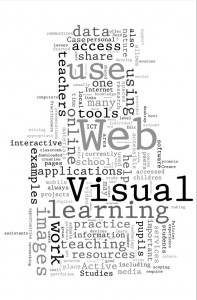virtual learning
Introduction
For almost than thirty years successive British governments have proclaimed the importance of Information and Communication Technology (ICT) for education and made significant investment in schools. Initiatives such as visual learning technologies, online learning, curriculum resources for both teachers and students and Life Long Learning have all had an impact on education. School communities – students, their parents and their teachers – have struggled to manage technological change when resources, particularly those of time, have been stretched by the curricular and administrative changes they have had to implement.
The impact of ICT in the classroom transforms management, organisation and conventional pedagogical approaches. Many teachers still struggle with integrating ICT into teaching and learning, even though the ICT training programme provided by the New Opportunities Fund (NOF) aimed to provide the skills and theoretical framework within which educational praxis can absorb these changes. ICT is seen as an integral part of each strand of the National Curriculum, and the performance of teachers is to be judged on their ability to integrate ICT within their teaching and their students’ learning.
Over the past 15 years, however, a significant number of students have access to computer facilities of one kind or another at home. The ways in which they have learned to use these devices, and the uses to which they are put, are shaped more by personal experience and input from their peers than by their schools. The programs they use, the ways in which they learn and the work they create mean that the education system struggles to meet the demands and expectations of these young people. What follows, of course, is that those who do not have this technology at home are doubly disadvantaged if their schools and teachers cannot compensate.
From 1995 to 2000 these issues were investigated by the author, and this book is based on several years’ research into patterns of computer ownership and use among young people. A six-year longitudinal study by John Cuthell of some 1800 students at a comprehensive school in West Yorkshire provided the data from which the results were drawn. Student work was examined during this period, and students themselves commented on the ways in which computers had changed their work. Teacher use and teacher attitudes were also examined. The results clearly demonstrate the disparity between student computer ownership and use and that of their teachers. Further studies have only confirmed this.
The citizens of the twenty first century are being taught in classrooms of the twentieth century whose praxis is shaped by the 1870 Education Act.
Digital technologies present students with powerful tools for learning. Young people who use them have been set free from conventional expectations of learning. This raises profound issues for the educational system of the new century.
